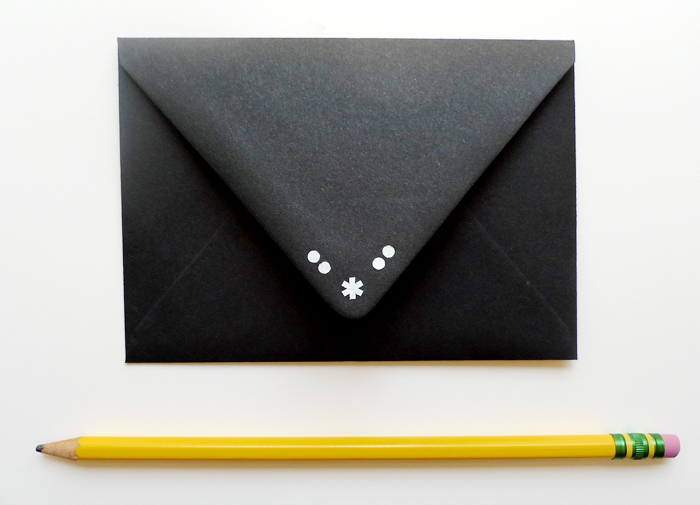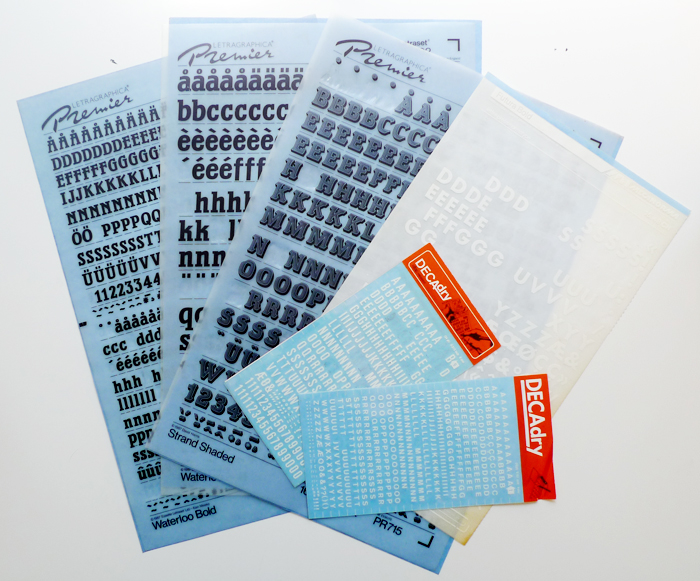After finding some old sheets of Letraset letters at a garage sale a few weeks ago, I was looking for a creative way to use them up. I wasn’t very familiar with Letraset, but knew they were a relic of the graphic design world from before computers were ubiquitous, which made them seem just outdated enough to be fun. I’ve got nothing against computers, but I have an affinity for archaic technology in all it’s forms. I decided it would be appropriate to try out the letters on some envelopes to see what it would look like.

In case you’ve never encountered them before, Letraset are sheets of dry transferrable lettering, which can be transferred one by one onto a piece of artwork by rubbing directly on the transfer sheet over the letter you wish to transfer. It’s a tedious process, but before computers were available, the alternative was to draw out letters by hand. It seems that Letraset was available in many different colors, although I only found black and white.
I even made a little time-lapse video to show how it works:
[vimeo http://www.vimeo.com/48405013 w=700&h=393]
It was easy enough to transfer over my friend’s addresses to the front of different colored envelopes, although I did start to get a cramp in my thumb from pressing down on the transfer sheets over and over again. I’m not sure that I would recommend this method for everyday snail mail, since the letters seem like they could potentially flake off a little during transit, and the black letters could easily be replicated using a computer. In fact, with most household printers being able to accommodate different sizes of envelopes, I’d say you’d probably be better off just laying out something cool in Word or Photoshop, and then printing out your designs that way. The only exception to this? The white letters!
The white letters are so unique, since you can’t print something like this out from your standard ink jet printer. You’d be hard pressed to even get these types of results with a stamp and white opaque ink. The white Letraset looks super bold on the black envelopes, and I’ll be using it often to label my darker envelopes.












